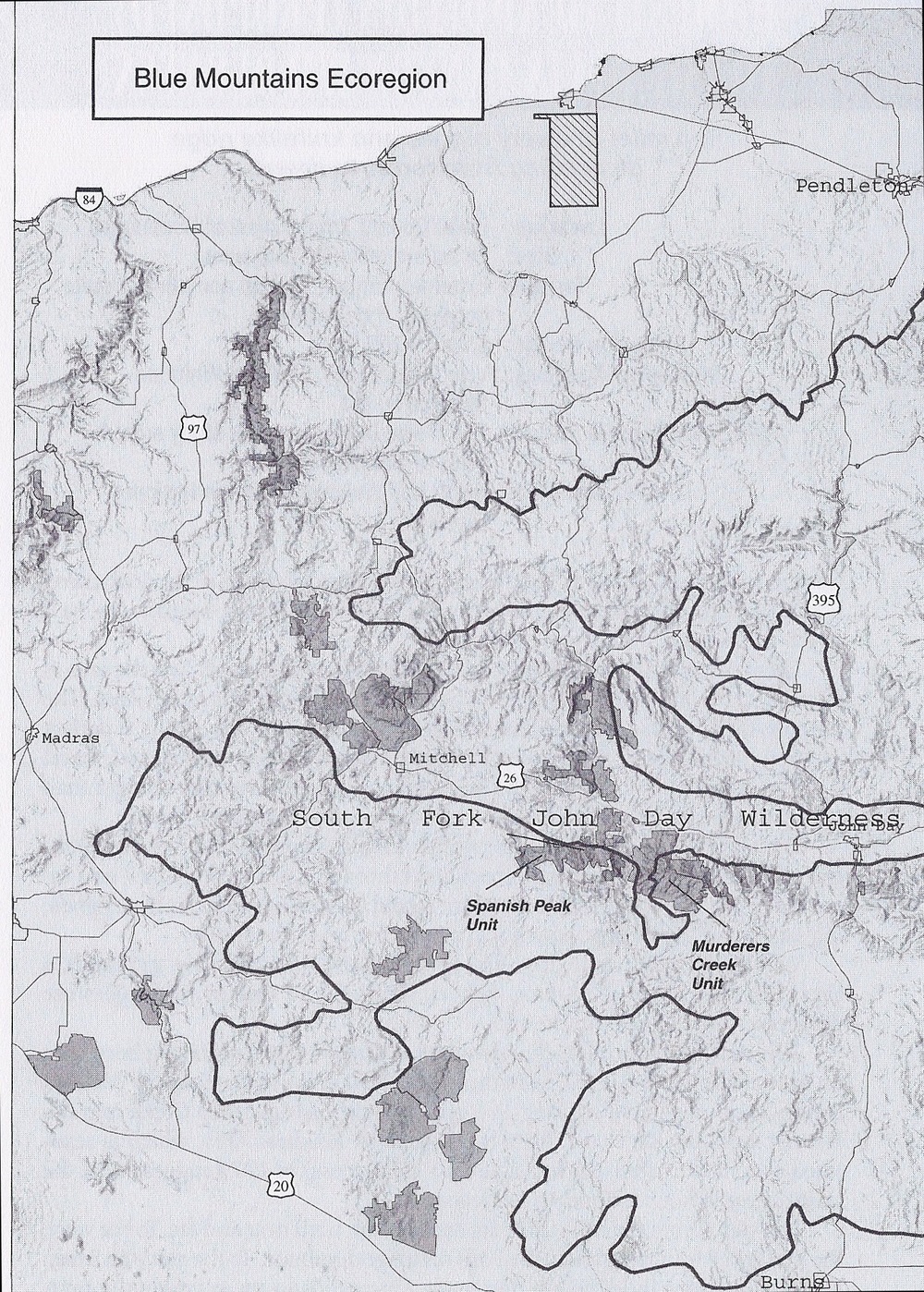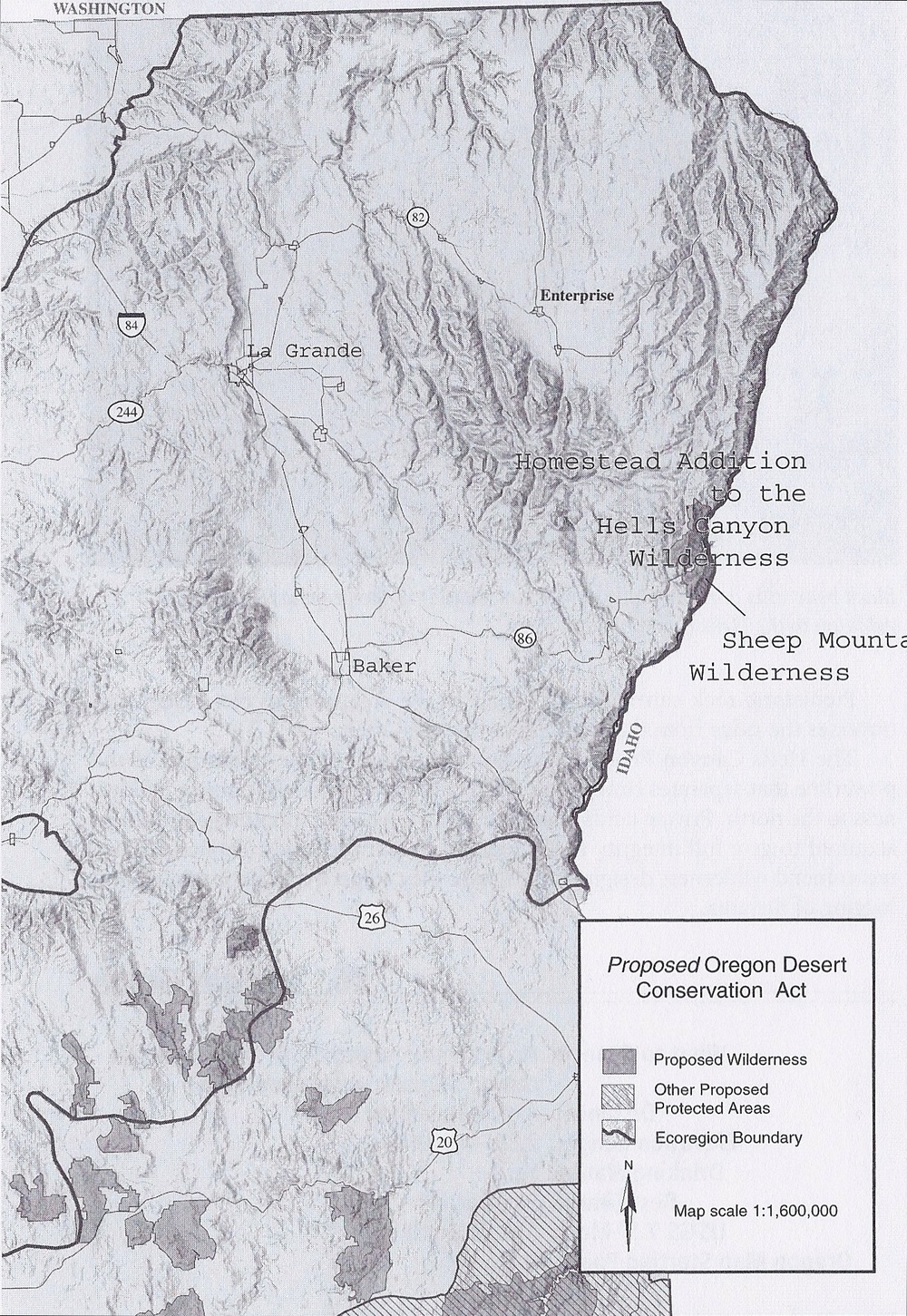 Blue Mountains
Blue Mountains
Suggested Citation: Kerr, Andy. 2000. Oregon Desert Guide: 70 Hikes. Seattle: The Mountaineers Books. p. 160.
<<<-Previous Table of Contents Next->>>
Though they give the ecoregion its name, the Blue Mountains, as the headwaters of the Malheur, John Day, and Umatilla Rivers, are only a part of it. Also included are Hells Canyon, the Wallowa Mountains, and the Powder and Grande Ronde river valleys. Ecologically, the ecoregion extends into Washington and Idaho.
The Blues run generally northeast-southwest. Major appendages to the main spine (albeit a rather broken one) of the Blue Mountains are usually given other names: the Ochoco, Aldrich, Strawberry, Greenhorn, and Elkhorn Ranges.
According to the Oregon Biodiversity Project, sharp elevational diversity causes climate differences over broad temperature and precipitation ranges. While more than half of the region is forested, vast portions are dominated by treeless ecosystems. The ecoregion has two distinct timberlines: the upper one we usually think of first that gives way to alpine habitat, but also a lower timberline that gives way to grasslands and steppes.
Fescue bunchgrass once was the most common grassland, of which agricultural development has taken half. Sagebrush and grassland steppes dominate the eastern portion of the ecoregion, while western juniper dominates the southern sections. The lower elevations also often had wetlands, again decimated by agriculture.
The summers are short and dry, the winters long and cold.
Fire dominated this ecoregion, both in the forest and the steppe. Suppression of fire in the forested regions and excessive fire in the cow-bombed grasslands—the latter of which have been overtaken by the highly flammable exotic cheatgrass—have significantly changed the landscape.
The Columbian sharp-tailed grouse was once common in prairie areas but was extirpated by the 1970s. Reintroduction efforts are underway.
The Oregon Biodiversity Project has estimated that 6.9 percent of the ecoregion is adequately protected to conserve and restore biodiversity These areas are in mostly the forested portions.

